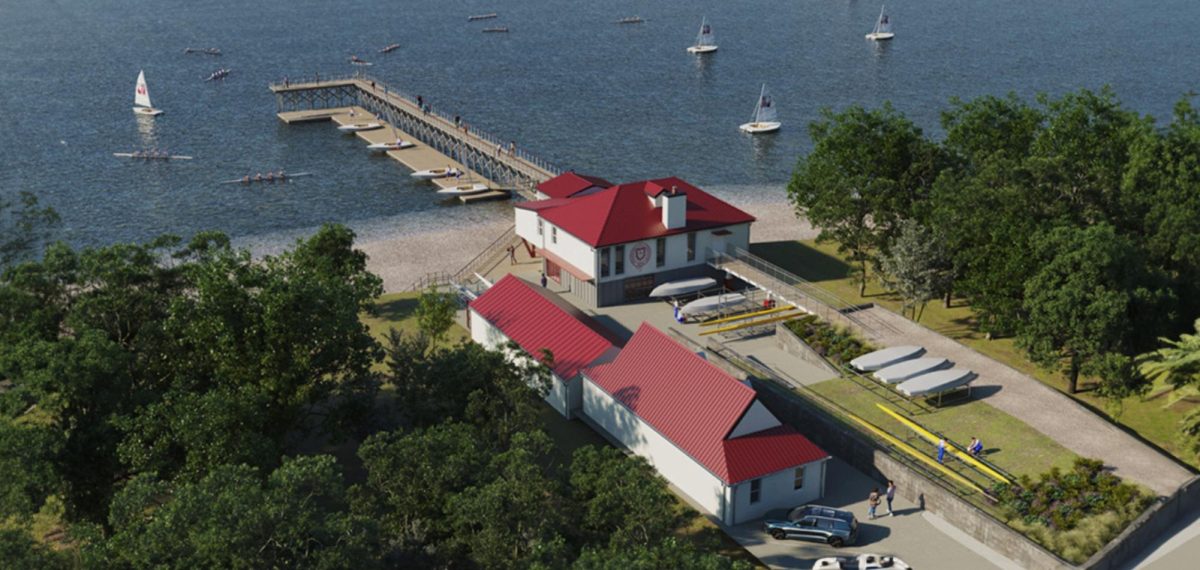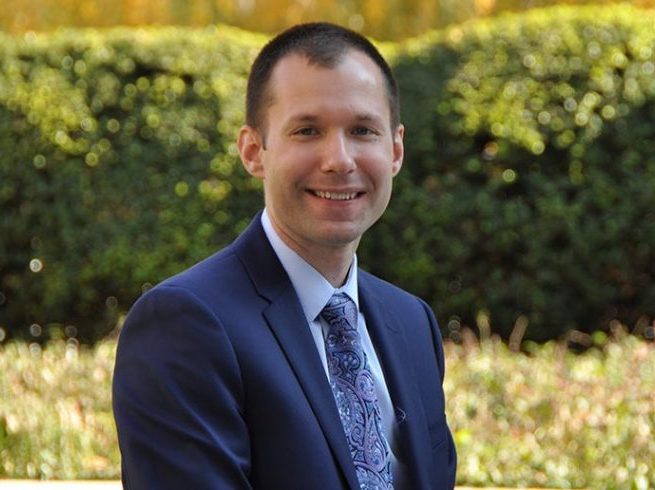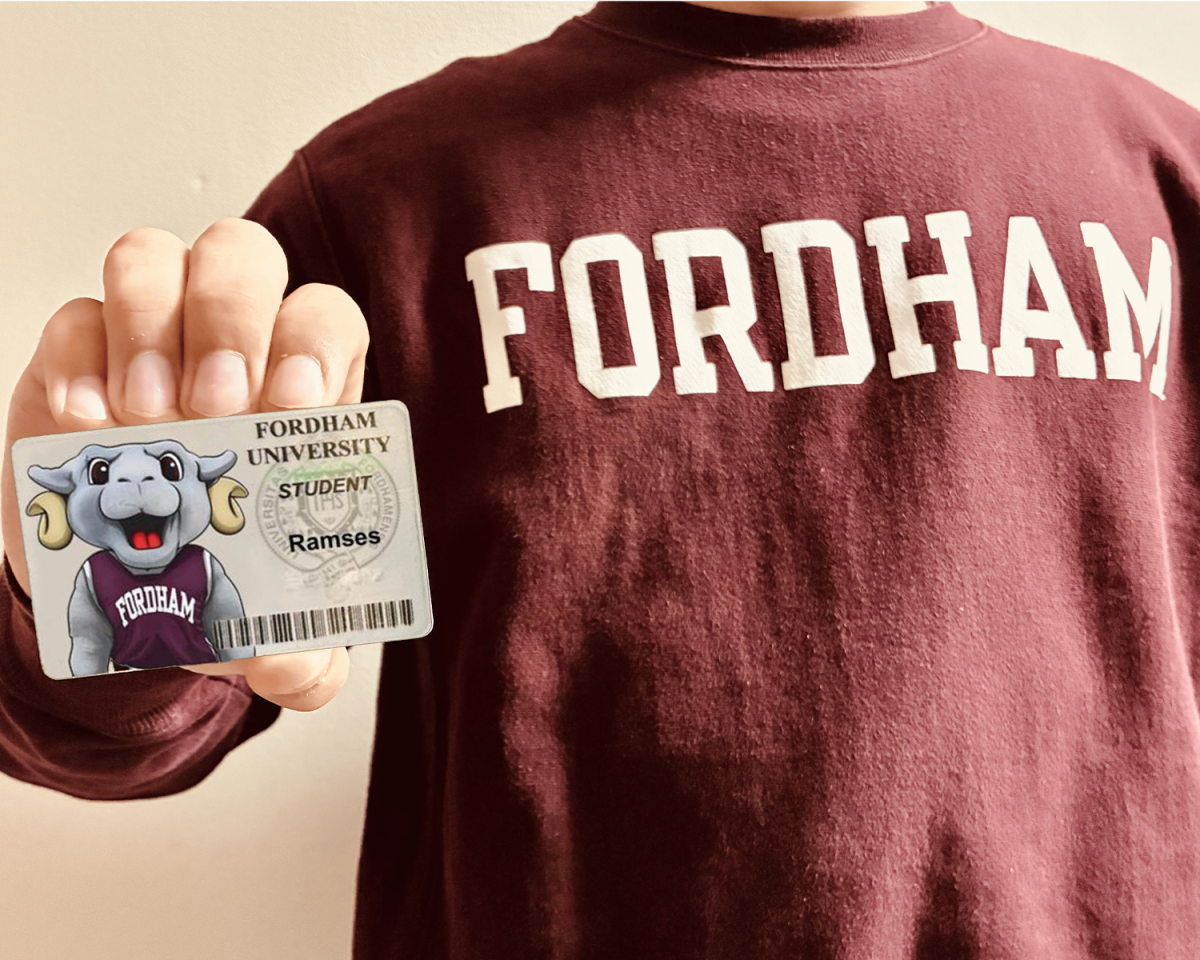Fordham University alumnus Dennis Ruppel, FCRH ’68, and his wife Pat Ruppel, purchased a piece of land in June 2018, overlooking Palmer Inlet on Eastchester Bay, four miles east of the university’s Rose Hill campus. The Ruppels donated the land to the university soon after they purchased it. Construction is currently underway on this property to provide a new waterfront center to Fordham’s sailing and crew teams.
According to Mike Mullarney, FCRH ’68, the vice-commodore of the Fordham sailing team and Ruppel’s first-year roommate at Fordham, the original reasoning behind purchasing the land was to support the Fordham sailing team. “To get to the point where we wanna be, continually challenging for the national championship, we need to have the facilities,” said Mullarney.
Both Ruppel and Mullarney were members of the Fordham sailing team as undergraduates. Now, being the commodore and vice-commodore of the team, Ruppel and Mullarney are benefactors.
Raising the money for the waterfront center can be attributed to the alums and supporters of Fordham Sailing. “We have three or four people who have put up big numbers, and there are a lot of other people who have put up not-small numbers,” said Mullarney. The team has a large alumni network, which contains a group of donors, many of whom sit on the sailing team’s executive board, according to Mullarney.
The development of the waterfront center was one of the main reasons that head coach Zach Runci decided to lead the sailing team. “We had this boathouse development on the horizon, and there was a lot of progress about to happen — having construction start within the first year that I was coaching here at Fordham,” said Runci, who is now in his second year of coaching.
Annika Ekholm, FCRH ’20, the assistant coach of the sailing team, said that the idea of this waterfront center was only a dream when she was competing for Fordham Sailing as a student. “It’s confirmed [to be] happening, which is crazy and awesome to say,” she said. Ekholm and the other leaders of the sailing team have been in contact with Fordham about their project and with the recent progress in the waterfront center. “The university is more involved, which is great, and they are really excited about it,” said Ekholm.
According to Ekholm, the development of the boathouse will be carried out in three stages. By Feb. 1, 2025, she says, docks will be in place on the property for full use of the sailing team. Stage two is the refurbishing of two weathered buildings that previously belonged to Westchester Country Club, these will serve as boathouses for the Fordham rowing and sailing and crew teams. Ekholm says the goal is to have stage two completed by the summer of 2026. Stage three involves an endowment to support the operations of the waterfront center for the foreseeable future, according to Ekholm.
The coaches say that once it is built, the team’s goal is to create a community sailing program based out of the waterfront center. The vision of the project is to bring sailing to the local community, creating a hub of waterfront activity on Eastchester Bay, according to Runci.
The future waterfront center will be directly next to Villa Maria Academy, a private Catholic elementary school. “We want them to view it as an asset,” said Paul Chester, a founding partner of the real estate team of Tomatt & Paul Real Estate, who is leading the development of the waterfront center. There are plans to have a strong relationship with this school, and hopefully many others in the surrounding area, offering a program for kids in the city to explore sailing, according to Chester.
Fordham also envisions that the new waterfront center will play a role in programs related to environmental studies. In 2016, Fordham Sailing’s executive board hired Timothy Judge, an adjunct professor of environmental studies at Ramapo College in New Jersey, to do the environmental permitting for the waterfront center. Judge says he plans to build an osprey pole, where osprey (considered a threatened species by the state of New York) can make a new home. The nest would also contain a live feed, providing students at Villa Maria Academy with an up-close, educational way of viewing the bird safely, Judge said.
In addition, Judge is working with the Billion Oyster Project, a non-profit organization built to restore oysters to New York Harbor. Judge said he plans to incorporate oyster reefs in the water off the waterfront center to help purify the water with the help of these natural filter feeders. In addition to providing environmental education to Villa Maria Academy, Judge said, “Fordham can design education through the osprey nest and the Billion Oyster Project.”
The first Fordham students to use the waterfront center will be those on the sailing team, according to its coaches. The team is currently a club sport, but the coaches and sailors say better facilities would help sailing move to the varsity level. “We can elevate our status as a team with the aspect of these floating docks,” said Elizabeth Cochran, GSB ’27, who is on the Fordham sailing team.
Down the line, the project’s initiators say they are hopeful that Ram Vans will travel directly to the waterfront center from the Rose Hill campus. “It can be a great campus center. We can have kayaks and paddleboards, and students can spend a few hours on a nice afternoon out on the water,” said Runci.
“Students can have internships there, there can be art projects there and there can be environmental science classes there,” said Ekholm. According to the coaches, this new waterfront center will eventually be a resource to the entire Fordham community and beyond.
Note: Writer is part of the Fordham sailing team.









































































































































































































